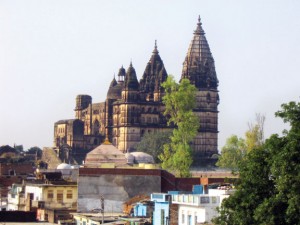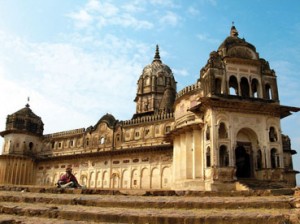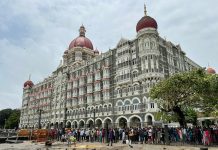 Orchha is a medieval architectural marvel that puts modern towns to shame. Youth Inc explores a chunk of India’s forgotten history through this erstwhile royal capital.
Orchha is a medieval architectural marvel that puts modern towns to shame. Youth Inc explores a chunk of India’s forgotten history through this erstwhile royal capital.
Located in the heart of India, in the aptly named state of Madhya Pradesh (‘central province’), Orchha is a forgotten Rajput capital. Fed by the Betwa river, it was founded by Rudra Pratap, a Rajput chieftan, in the early 16th century as the capital of Orchha state. The region subsequently became known as Bundelkhand after the ruling Bundela dynasty, the specific Rajput clan Rudra Pratap belonged to. A keen builder, Rudra Pratap built the first structure of the capital – Orchha Fort. His successors, especially Vir Singh Deo, inherited his love for architecture and kept alive a persistent programme of building. The result today is a ghost town peppered with breathtaking structures that lend Orchha its picture postcard quality.
Orchha does not figure in the conventional tourist map. Few know of its existence. The edifices of Orchha are a perfect getaway for the invested explorer who relishes glimpsing history by way of keen and quiet observation.
Laxminarayan Temple:
An interesting synthesis of fort and temple architecture, its interiors are a riot of paintings and murals. The subjects are both spiritual and secular and are clearly visible even today thanks to remarkable preservation.
Getting There
The nearest town is Jhansi in Uttar Pradesh, about 15 km away.
-
From Gwalior, Delhi or Agra take a train to Jhansi station.
-
From Jhansi station, take either an auto rickshaw (40 minute journey) or a taxi (20 minute journey). There are share auto rickshaws outside the station, which can seat 8 to 11 people and charge a nominal fee.
The historical precinct of Orchha is no bigger than a small village today, so you can go everywhere on foot.
What to See
Ram Raja Mandir: As the name suggests, this is a temple dedicated to Rama. The legend connected to this temple is that idols meant to be installed in the nearby Chaturbhuj Temple were kept on the ground, but got stuck there as they refused to move. A makeshift temple was then built around them which became the Ram Raja Mandir. Its courtyard is exquisite and colourful.
Chaturbhuj Temple: Dedicated to the fourarmed (‘chaturbhuj’) Vishnu, this temple is the dominating structure of Orchha town. Though rich in exterior ornamentation, the sanctum sanctorum is plain and high. Look out for the hidden stairs that lead to the roof for a spectacular view of the entire area.
Phool Bagh: This is a garden with a central row of fountains that ends in an eight-pillared pavilion-like palace. An underground structure here was intended to be the cool retreat for the Orchha kings during the summer. The water ventilation system connects the underground palace with Chandan Katora, a bowl-like structure from whose fountains droplets of water filtered through to the roof, simulating rainfall.
Sundar Mahal: One of the Orchha princes married a Muslim girl and converted to Islam. He spent the latter part of his life in prayer and meditation, presumably in this palace, and is now recognised as a saint. And although today it is in ruins, this palace is a pilgrimage place for Muslims.
Chhatris (cenotaphs): 14 memorials to the Orchha kings are grouped along the Kanchan Ghat of the Betwa at the south end of town. They can be climbed for great views of the river.
Travel Tips
-
The best time to visit Orchha is during the monsoons (July to September) when the Betwa is swollen. Get your feet wet in the river. Avoid summers.
-
If the Betwa river overflows, avoid crossing the bridge that lies over it. It leads to a forest, which is worth a visit at other times.
-
If you fancy some shopping, there is a small market in front of the Ram Raja Mandir. You’ll find handicrafts, souvenirs, gemstones, beaded chains and necklaces and other similar ornamental items. Remember to haggle for a good price!
-
There are a couple of street restaurants for cheap food and drink. There is only one liquor store in town and it is in the market, but don’t expect international brands. Sheesh Mahal and Amar Mahal, the more upscale hotels here, have better food and drink but are more expensive.
Volume 2 Issue 5
































